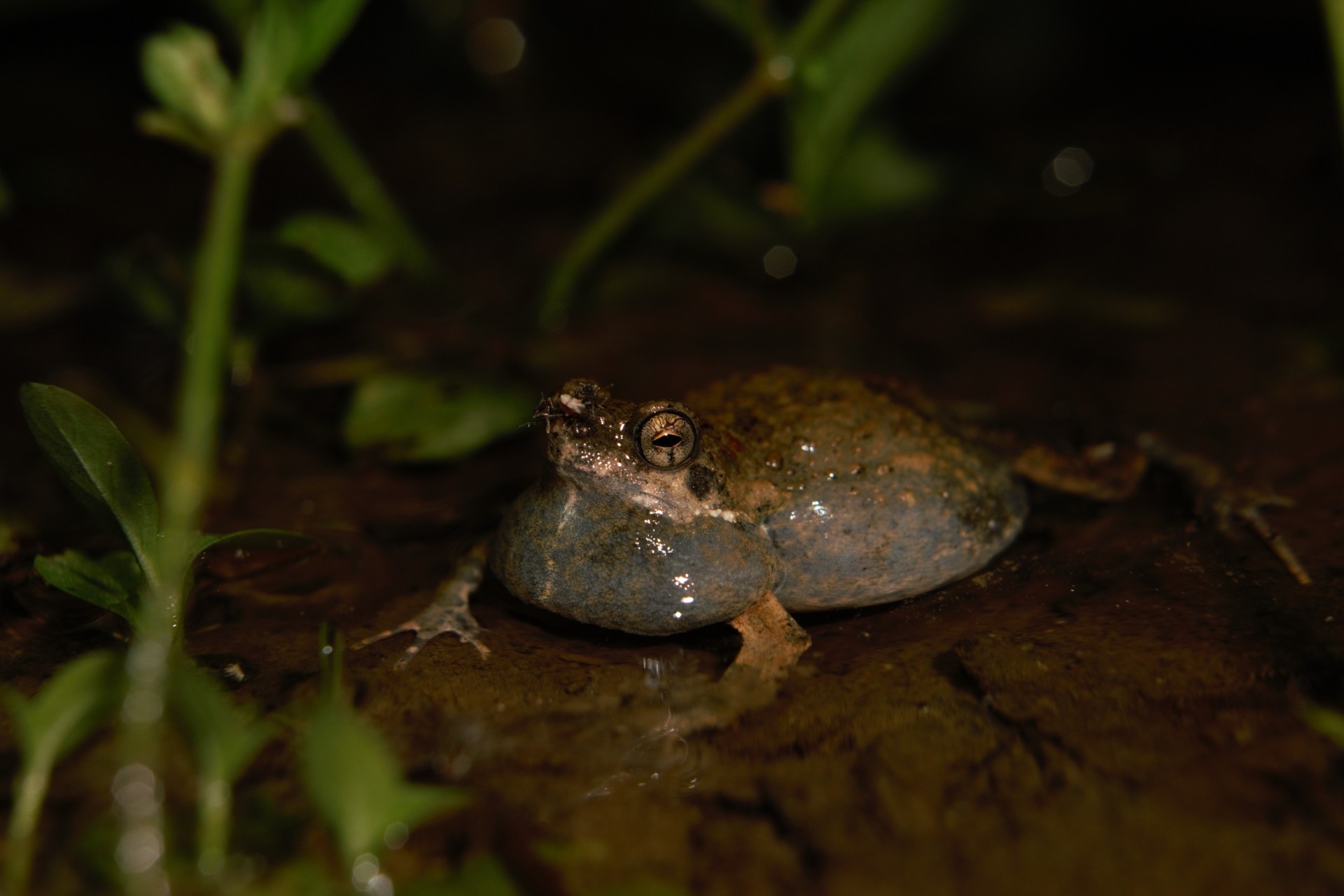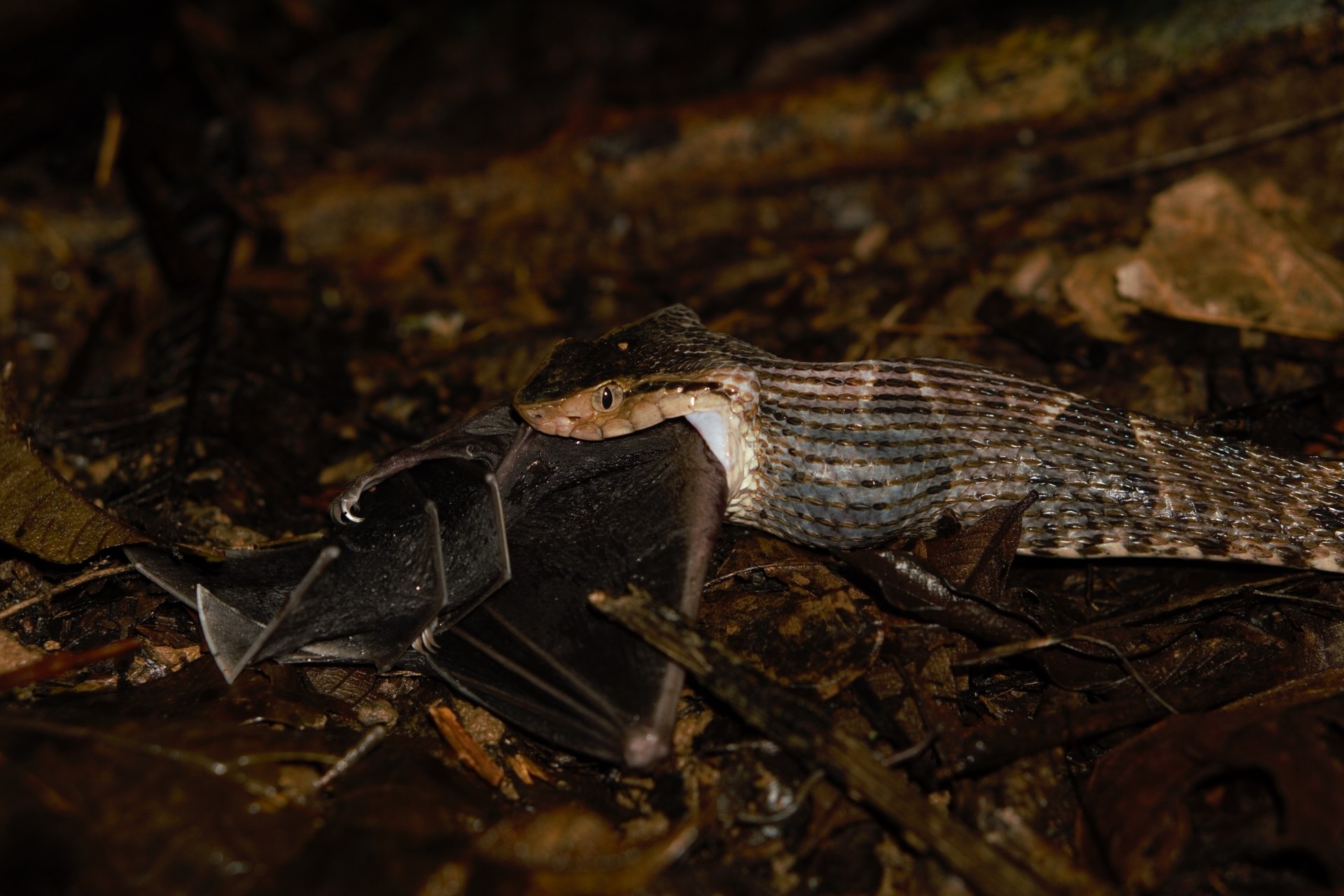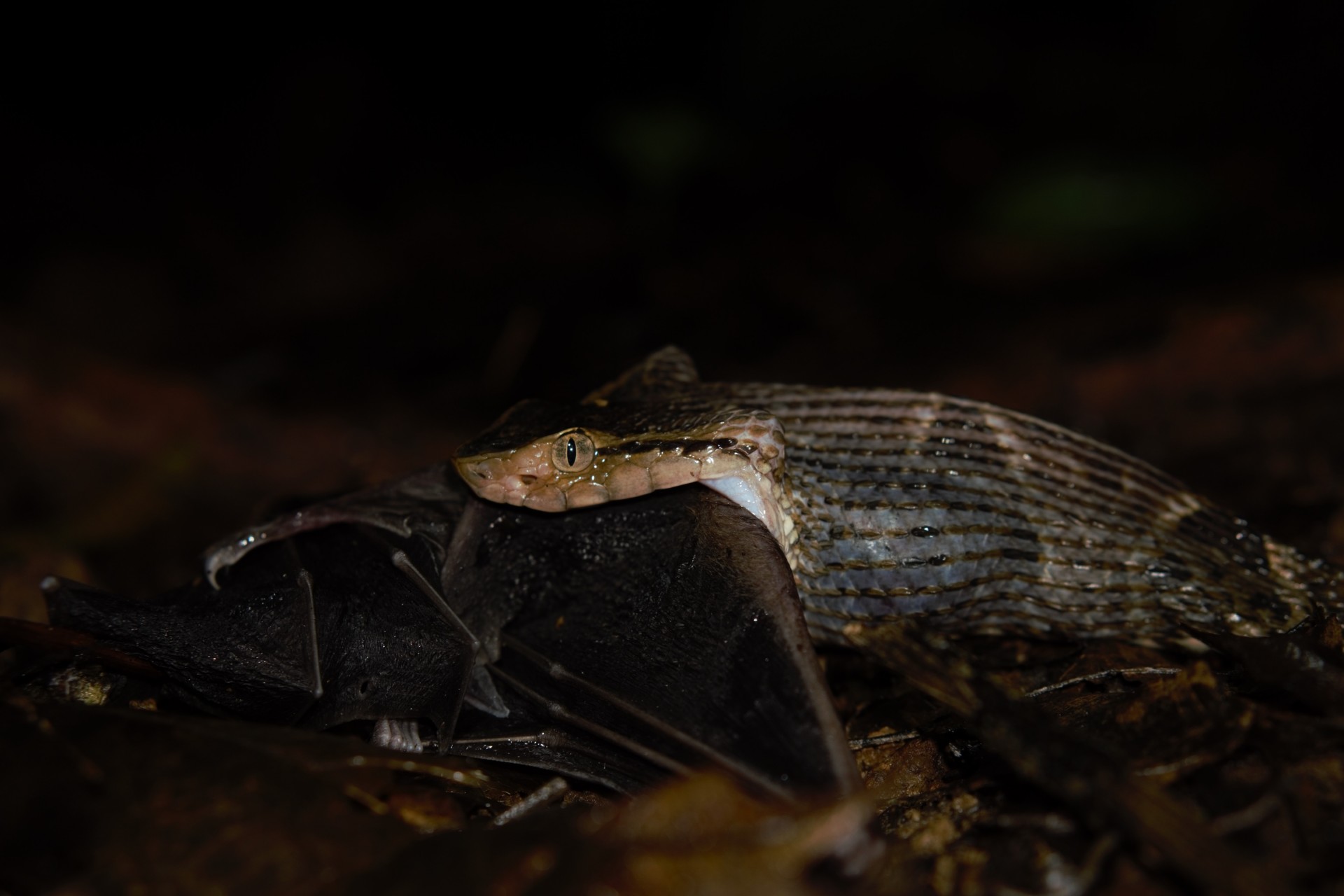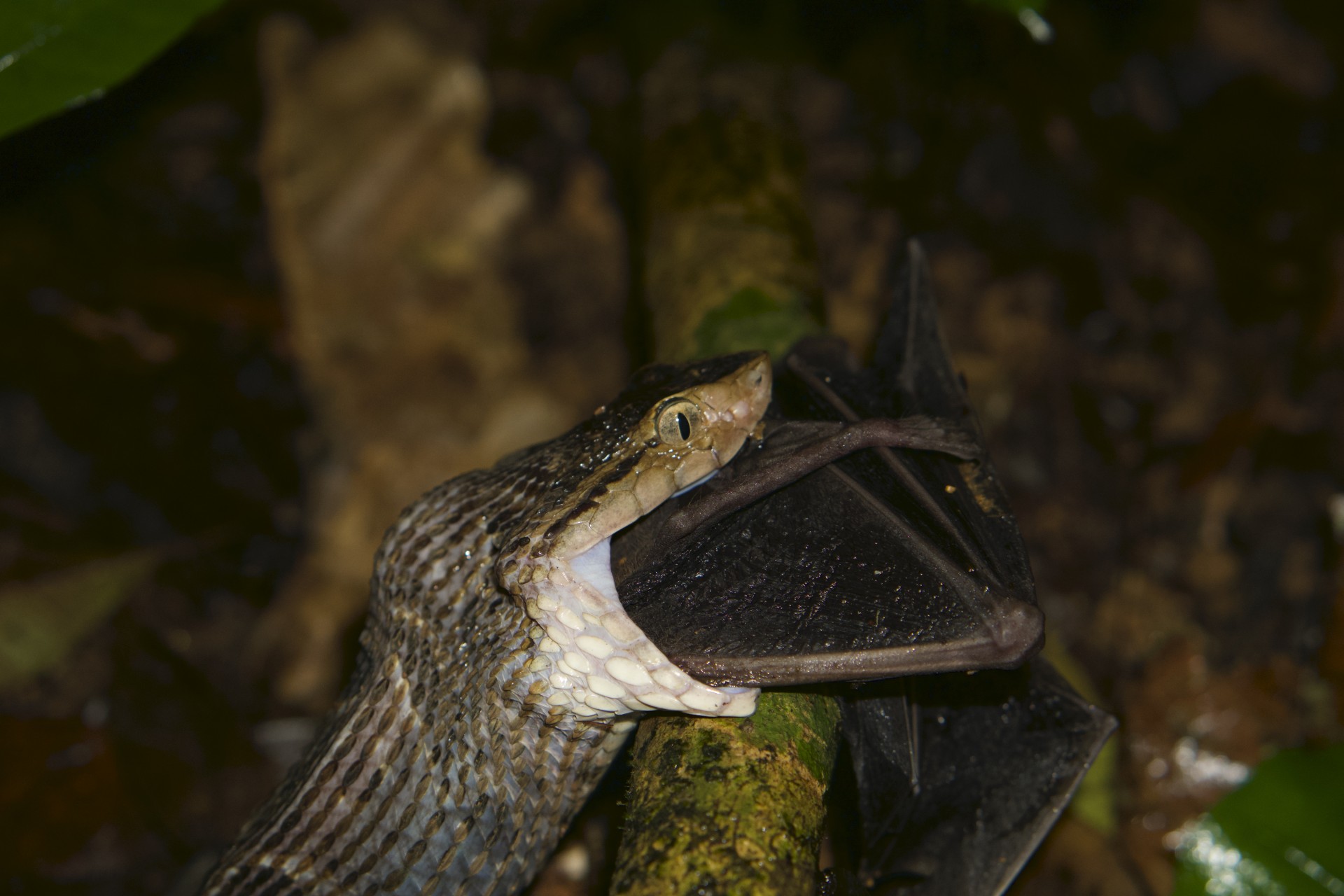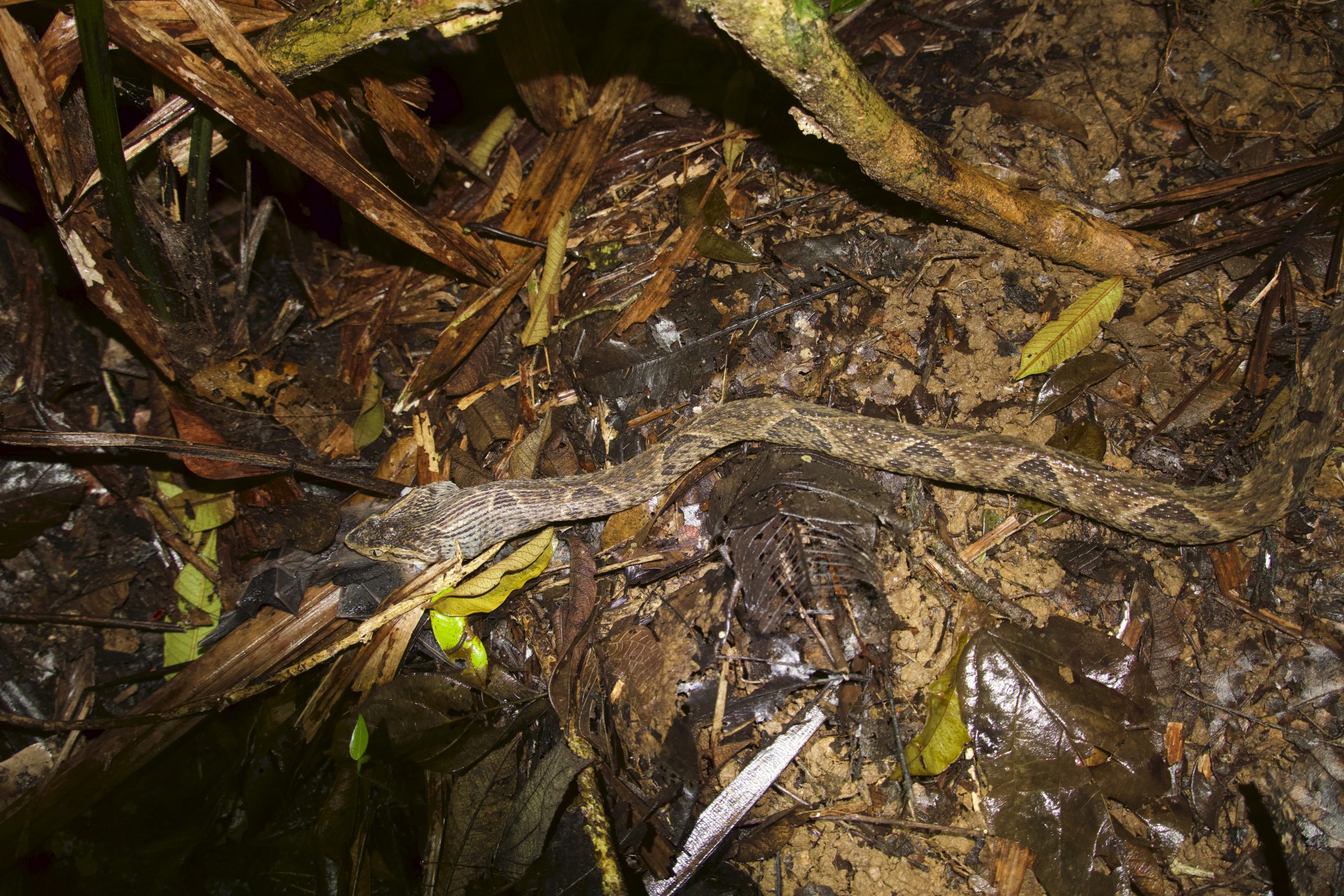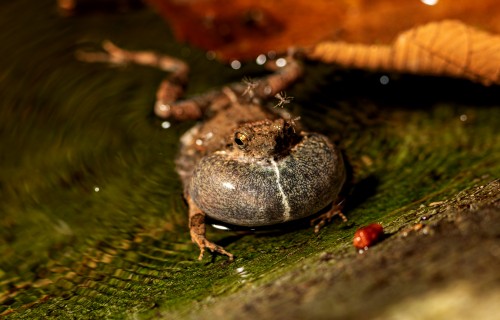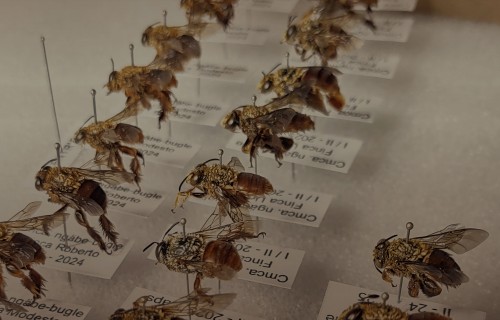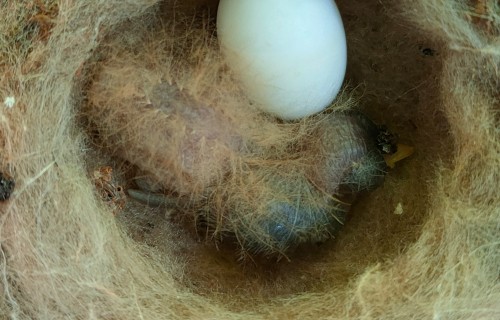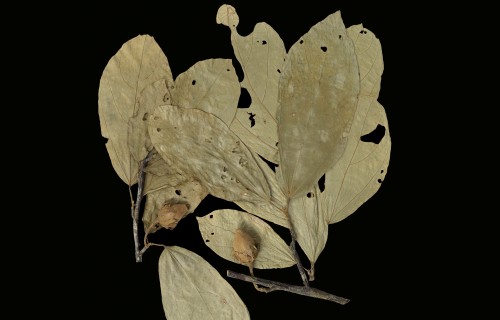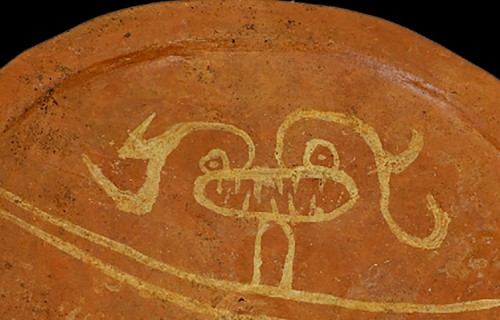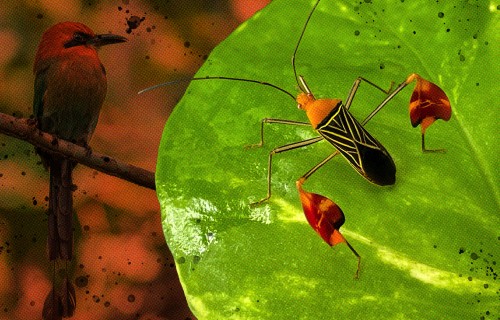A comparison of colorful hamlets
from the Caribbean challenges ideas
about how species arise
Yikes!
Venomous snake captures
frog-eating bat
Text by Hubert Szczygieł
Gamboa, Panama
Hubert Szczygieł recently arrived at STRI in Panama and is already becoming one of Gamboa’s most awesome natural historians.
Many strange and wonderful things can be found in the jungle at night, but I never anticipated the encounter I had on a small stream off of Panama’s Pipeline Road. Named for an oil pipeline built across Panama by the US during World War II, but never used, Pipeline Road parallels the Panama Canal and is famous among birdwatchers for several record-setting one-day bird counts. Pipeline is also a living laboratory for students at the Smithsonian Tropical Research Institute.
One Saturday evening I hitched a ride from the nearby town of Gamboa to the beginning of Pipeline while there was still light in the sky, aiming to observe the transition between day and night in the jungle. As twilight falls, birds come in to their roosts and bats leave theirs, lizards settle down to sleep on leaves and branches, while frogs come down from the trees or out from the leaf litter. Eerie roars echo through the dripping trees as howler monkeys say good night to each other. My goal for the evening was to find glass frogs—so called because of their transparent bellies that reveal their digestive systems, veins, and little beating hearts—and I knew I needed to follow a small stream up into the jungle to find their breeding grounds, guided by their characteristic high-pitched calls.
I walked for an hour or so down the road as dusk faded to darkness, punctuated by yellow flashes of fireflies, then stepped off the road into a flooded section of forest. I followed a trickle of a steam up from the road, weaving between lianas and ducking under palm fronds. Life was everywhere! Going vaguely in the direction of some frog calls, I first got distracted by a pretty green spider posing on a leaf, before I caught sight of a strange orange fungus out of the corner of my eye. I nearly stumbled into a palm patrolled by a gang of bullet ants, then tried to take a picture of a sleeping bird up in a tree.
Eventually I hit a dead end where my stream disappeared under ground, and I had only seen a few of the ubiquitous túngara frogs. I circled around for a bit then decided that there were no glass frogs here; I needed to push on to the next stream. As I turned to leave, I saw a bright orange pinpoint reflecting my headlamp: eyeshine! Thinking it was a smokey jungle frog, I slogged through the mud towards it excitedly, but was shocked to find a fer-de-lance snake eating a bat!
The bat
Though a definitive identification would be impossible without pictures of the head (which was already in the snake’s mouth by the time I found it), the consensus of STRI bat researchers was that it was a fringe-lipped bat (Trachops cirrhosus). This is one of the primary study subjects of Rachel Page’s lab, which studies their predator-prey interactions and foraging behavior. A lot of research has been done on the way these bats interact with the environment. These bats are medium-sized by Panama standards, and their favorite food is túngara frogs (Engystomops pustulosus). Male túngaras call from puddles and small streams, balancing their need to find a mate with their need to remain hidden from bats, which eavesdrop on their calls and use the ripples these frogs make in the water to find them.
The snake
Fer-de-lance (Bothrops asper) are sometimes called equis in Panama due to the X-shaped markings along their backs. They are pit vipers, among the most venomous snakes in Central and South America. Juveniles eat mainly frogs and lizards, and as they grow, they transition to eating warm-blooded animals, including birds, rodents and other small mammals. I was quite surprised to find one eating a bat, however, because as far as I knew these snakes are not arboreal (I later confirmed that juveniles of this species have limited tree-climbing abilities, but are mostly found on the ground as adults).
I took advantage of this deadly snake having a mouthful of bat and took several close-up pictures. A couple days later I posted a few of these pictures on Gamboa’s Naturalist Whatsapp Group, and immediately caught the attention of the bat lab, who explained that this was a very lucky find. With the help of bat researchers Rachel Page and Gregg Cohen, I pieced together what might have happened that night, and its significance.
It is not unusual for snakes to eat bats. Snakes hanging from the ceilings of large caves, including yellow-red rat snakes in Mexico, Puerto Rican boas, rainbow boas in Ecuador and Cuban boas, snag bats as they leave the caves by the thousands. Various boa species have been caught sneaking into roosts and catching sleeping bats. However, to my knowledge, the spectacle I saw off Pipeline Road is the first documented observation of a predation event by a ground-dwelling snake on a foraging bat. Fringe-lipped bats leave their roosts for the nightly hunt at dusk (usually between 6:30 and 7:00pm), and my observation started at 8:15pm, which implies that unlike other documented sightings of snake-bat predation, which were associated with bat roosting behavior, this one occurred while the bat was out hunting.
The main question brought up by bat researchers when they see this photo is how often an event like this occurs. The bat lab has split views regarding how rare an event like this can be. It is possible that the snake was near the stream hunting for frogs, and simply caught the bat when the opportunity presented itself. However, staff scientist Rachel Page says that it is possible that such events occur more frequently than one might think, but simply go unrecorded.
Túngara frogs are a favorite prey of the fringe-lipped bats, but as túngaras call exclusively from water on the ground, this means that the bats must come down to the ground as they hunt. Work with these bats in captivity has shown that fringe-lipped bats are often reluctant to land on the ground, and Page suggests that this may be when they are most vulnerable to predation. My observation definitely supports this hypothesis. Even if snake-bat predation happens regularly, is it always just a happy accident for the snake, or is there something more complex going on?
The exciting alternative to this event being simply a one-off case of opportunism is that perhaps this fer-de-lance had learned that small streams full of calling túngara frogs are places that bats frequently land, and that places where there are calling frogs offer the opportunity to catch distracted bats. Fringe-lipped bats use the obstruction-free space over Pipeline Road as a highway on their way to hunting grounds throughout the jungle. I found the snake in a trickle of a stream, ideal túngara breeding habitat, 65 meters from pipeline road.
Gamboa Bat Lab Manager Gregg Cohen says that bats flying down Pipeline Road could easily hear calling túngaras over that distance, and he pointed out that a culvert nearby is a known roosting spot for fringe-lipped bats. Fer-de-lance have small home ranges relative to other pit vipers (between 3.71 and 5.95 ha), so it is possible that this fer-de-lance learned that bats frequently hunt for túngara frogs in his territory, and he positioned himself at the edge of the stream where the frogs usually call. Though this idea seems far-fetched, and observing this kind of interaction again would be pretty miraculous, I will be sure to keep a lookout for bat-hunting snakes on future nighttime adventures on Pipeline Road.

